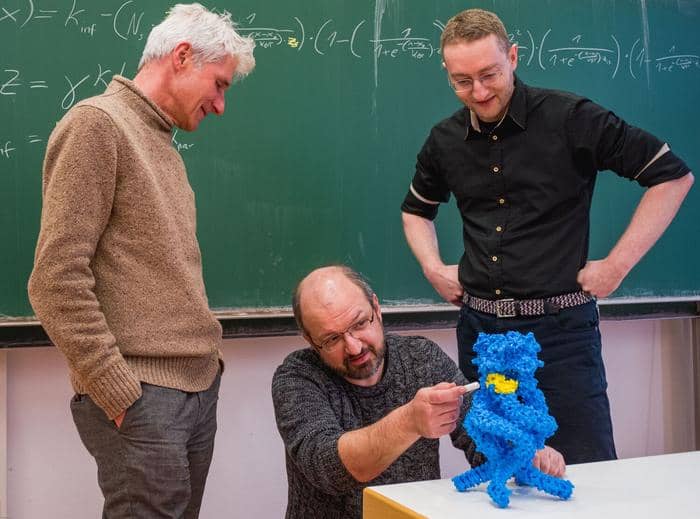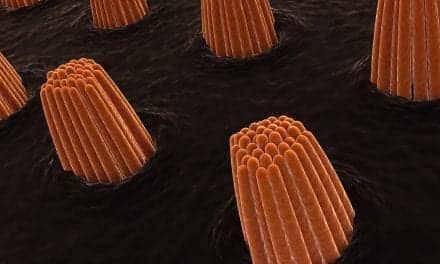Summary:
Researchers in Göttingen, Germany, have discovered the long-sought gating spring responsible for opening ion channels in sensory hair cells, shedding new light on the molecular mechanics of hearing.
Key Takeaways:
- Discovery of the Gating Spring: Scientists identified a flexible hinge, rather than a spiral structure, as the key mechanism enabling ion channels to open in response to sound.
- Impact on Hearing Science: This breakthrough clarifies how mechanical forces trigger ion flow in the ear, advancing our understanding of the molecular basis of hearing.
- Broader Implications: The findings suggest that similar gating mechanisms may exist in ion channels across various biological systems, influencing multiple sensory and cellular processes.
Hearing begins with the stretching of elastic molecular “springs” that open ion channels in the sensory hair cells of the ear. For decades, researchers have known that these gating springs must exist, but they could not find them. A team from the Cluster of Excellence Multiscale Bioimaging (MBExC) in Göttingen, Germany, has now discovered just such a spring for the first time. Their findings shed new light on our understanding of the sense of hearing and the function of ion channels. The results were published in Nature Neuroscience.
When sound hits the ear, it triggers tiny movements inside. “Hearing cells” register these movements with the help of specialized molecules, known as ion channels. The hearing cells have a pore with a gate that is normally closed. The movements detected inside the ear must be transmitted to the ion channel gates to open them. This is done by a gating spring, which, like the spring of a ballpoint pen, is springy and elastic. When these gating springs are stretched, they pull open the channel gates and ions can flow through the pores of the channels. Researchers have been searching for these springs for over 40 years. They found a promising structure in the ear of fruit flies: an ion channel that, in addition to a gate and a pore, also has a region that is wound spirally like a ballpoint pen spring. Researchers therefore suspected that this spiral could be the gating spring.
The research team, led by Professor Martin Göpfert, head of Göttingen University’s Department of Cellular Neurobiology, has now tested this. “Our assumption was that doubling the spiral would halve the stiffness of the gating spring. That was not the case,” says Dr Thomas Effertz, University Medical Center Göttingen (UMG), and one of two lead authors. The researchers found that the coiled spiral is stiff, but is flexibly attached to the channel gate via a bendy hinge. When the researchers doubled the hinge, putting two hinges in tandem, the stiffness of the opening spring was halved, which shows that the hinge is the gating spring.
“In fact, we were able to observe at the molecular level that it is not the spiral but the flexible joint that bends under mechanical tension,” says Professor Bert de Groot from Göttingen’s Max Planck Institute for Multidisciplinary Sciences. “We suspect,” says Dr Philip Hehlert, also at Göttingen University’s Department of Cellular Neurobiology and joint lead author, “that opening springs are hidden in every ion channel, including those in the human ear. Regardless of whether mechanical, electrical or chemical signals open an ion channel, the channel gate must be elastically suspended in order to open at all, and this suspension must serve as gating spring.”
These results not only provide important new insights into how the hearing process is initiated at the molecular level, but also contribute to a better understanding of the basic function of ion channels, which are an essential component of all cells and the basis of all senses.
Featured Image: The 3D model helps researchers to better understand the structure and function of the mechanical gating spring on the ion channel. From left to right: Professor Martin Göpfert, Dr Thomas Effertz, Dr Philip Hehlert. Photo: Philip Hehlert





